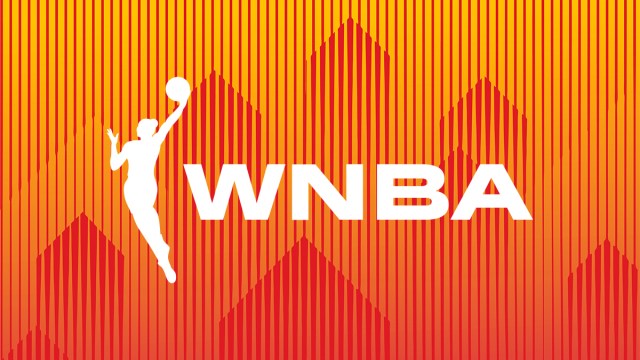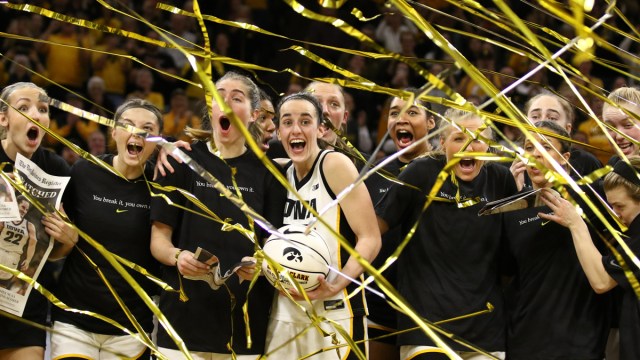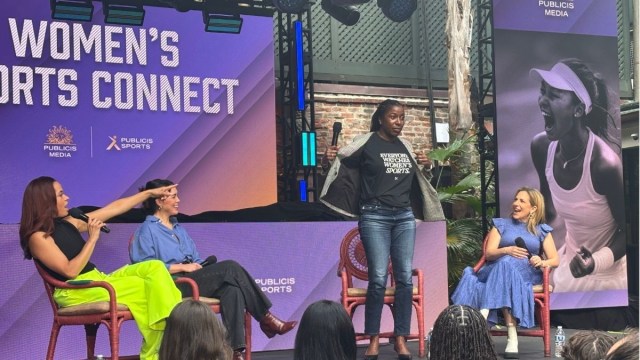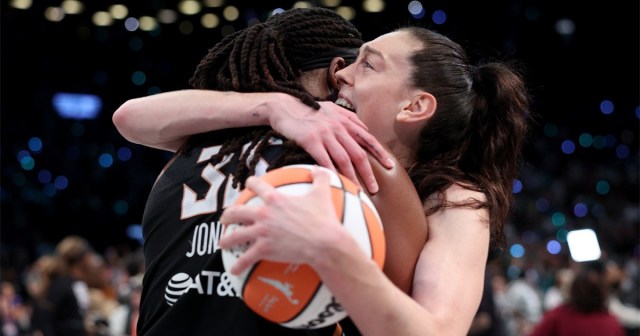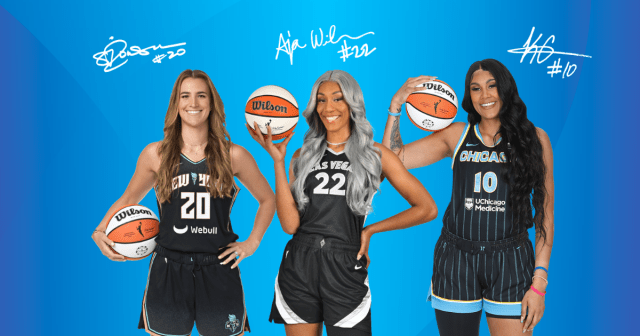New York Liberty CEO Keia Clarke Builds Women’s Sports Legacy in Brooklyn
Social media is evolving. Are you adapting? Connect with a community of brand pros and content creators at Social Media Week, May 12–14 in NYC, to learn how to keep pace with new trends and technology. Register now to save 20% on your pass.
New York Liberty CEO Keia Clarke lived through her team’s past and celebrated its championship present.
Now, she’s ready to build its legacy.
During a panel hosted by The Female Quotient at Google Pixel’s Player’s Lounge on NBA All-Star Weekend, Clarke addressed the audience in a Liberty varsity jacket from the team’s partners at fashion label Off-White that she said she hadn’t worn since the team’s championship parade down the Canyon of Heroes in Manhattan in October. Given her 14-year history with the sports franchise leading up to that title, there’s significant equity in that jacket’s seafoam accents and emerald glitter.
When Clarke arrived at the Liberty in 2011 after nearly five years in the NBA’s offices, the founding WNBA franchise was being forced from its Madison Square Garden home by renovations and starting what became three years at the Prudential Center in Newark, N.J. In 2018, while trying to sell the Liberty, the Madison Square Garden Company relocated the team to a 5,000-seat arena in White Plains.
The narrative changed distinctly when Joe and Clara Wu Tsai bought the team in 2019, gave it a fresh brand, moved games to Brooklyn’s Barclays Center, and invested heavily in both roster and support. A trip to the finals in 2023 led to the Liberty running it back in 2024 and beating the Minnesota Lynx for the WNBA title. Now, with a ring in hand, roots in the home market, and a full roster of marketable assets—including Brooklyn-imbued mascot Ellie—Clarke told the panel’s audience that the Liberty was no longer focused solely on drawing crowds but on creating values-based, long-term partnerships.
After the panel, Clarke sat down with ADWEEK and discussed the Liberty’s identity, its place in its surrounding community, and its leadership role both as a sports marketer and a WNBA franchise that’s endured since 1996.
ADWEEK: What were some of the learnings that went into the evolution of the Liberty from the franchise that was adrift nearly a decade ago to the championship-level organization it is today?
We set out with goals and a five-year plan when we moved to Barclays. It was almost a complete and utter restart once we arrived at Barclays Center.
Many people think we were focused on increasing partnerships, which we were, and getting more fans into the building, which we were. But the underpinning of that entire thing was always hinged on fan engagement. It was really about how we were going to come to life in Brooklyn: How much of it was going to be like what we did in Madison Square Garden, how much of it was going to be new and fresh and something that we would have just for Brooklyn, and how cool we would be from an identity standpoint.
Although we see the benefits of everything within this last year, it actually started in that 2021 season when we were coming out of Covid-19, when we did the tryout for Ellie, when we had a tryout for a woman DJ—we had seven different DJs come in. We were always focused on the fan engagement, the entertainment opportunity: How could we make this a destination for people?
What did it take to make the Liberty’s goal a reality?
Having the right talent became a key focus of ours, with Shana [Stephenson] as the visionary and the chief brand officer for this team, but building the pieces around her. We did content capture for the very first time. We hired a social media coordinator who was tweeting and posting just for the Liberty—we haven’t had that before. It was always a Swiss Army knife of someone who had to do multiple things.
It was that focus of the people. What are we really doing? What are we moving toward? What is our North Star? And it was to engage the fans. We knew that they would buy tickets—and maybe buy merch—and we knew that partners would be attracted to what we were creating if we got that one piece right.
The Liberty kept New York in their name but found a consistent voice by embracing Brooklyn. What does the organization see when it looks at Brooklyn, and how does it affect how it interacts with its fanbase and its community?
We often look around and say we fit better in Brooklyn because of who our fanbase is and because of what our players represent—because what the WNBA represents: It’s not multi-million dollar contracts.
It’s, as one of our super fans talks about, it’s the lunch pail mentality: I’m gonna get up and go to work every single day, and I’m going to grind it out. When people talk about us having a superstar team, we have those stars, but they showed up and did whatever they needed to do each and every night.
That led into this same storyline that we are telling when we enter a community, that we were telling when we are in Bed-Stuy, when we’re in Clinton Hill, when we’re in and around Barclays Center.
That’s what brings me the most joy—riding around Brooklyn. I drive in from New Jersey, so on a weekend, I get to see the fans in their Liberty T-shirts with kids on their shoulders or a couple holding hands, two little ladies who traveled from Harlem—sisters who have been members since 1997. To see them commuting to Brooklyn every day, that’s what it’s about.
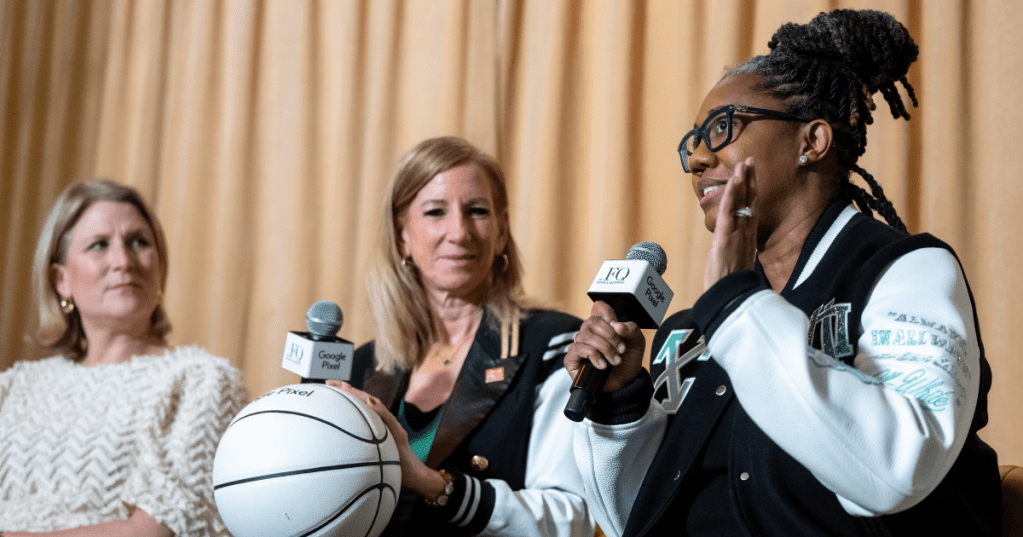
Brooklyn is multifaceted enough that those who love it can offer vastly different praise of their borough or neighborhood. How does the Liberty’s marketing message approach those different audiences?
The truth is, we’re actually not trying to hit everybody, per se. We made a decision from a social and community standpoint that we were going to focus on four key pillars.
We should be instructing youth on basketball and increasing the number of people who play basketball. But when it comes to girls and women, we amplify and highlight what it means in terms of equality or gender-based equality for people to really look to the Liberty as inspiration. So we do programming that is specifically for girls in the community, that specifically highlights women-owned businesses, that specifically highlights women in the political atmosphere, women in poor areas of business.
Racial equality has always been a part of our social activism. You can’t hide that the majority of players in our league are Black women, so we have initiatives that are specifically driven toward African-American life.
Lastly, we would be remiss if we actually didn’t pay homage to the LGBTQ+ community, which is the core of who supported the WNBA in many of the early years, and they’re still here.
How active has ownership been in creating the Liberty’s culture and engaging with its audiences?
Clara [Wu Tsai] is an amazing mind who sees the Liberty as having so much potential that she wanted to support it with her own resources, and I don’t just mean financial resources. Clara does interviews, Clara invites celebrities to games, and Clara is the torch bearer for what this will be in the long term—and I can’t ask for anything more than that.
And they’re doing it in the spirit of Brooklyn. The “You Belong Here. We Belong Here” sign that’s in front of Barclays Center. That’s Clara Wu Tsai’s sign, vision, and mystique, and that’s what she brings to the table every single day. So how could you not want to run through a wall and make sure that the business success and the KPIs are growing?
You said during your panel discussion that the Liberty are in a position to lead and take risks. How has that benefitted the organization?
Five years ago, I would have said we’re small, and we need to try some new things to see if we can figure out a way to grow. Today, I look at the things that we’re doing that are innovative as solutions to growth.
The local TV deal on Fox and making our games accessible to all of New York, not behind a paywall, was important to us, and it may be one of the best decisions we ever made in a championship year because mainstream New York knew exactly who we were and knew that we were the hot team all the way through. That’s special.
Ten years ago, that would have probably felt risky. Everyone was on a regional sports network. That was the way that people did things. But if we can be ahead of what the big four men’s sports leagues are doing, then we’ll be better off in the long run.
Things like the Liberty introducing our own direct-to-consumer (DTC) streaming platform, Liberty Live, last season … that’s ahead of the curve. Everybody is figuring out a streaming solution, [so] why would we have to wait until everybody’s all fully baked? There are many NBA teams doing DTC in its infancy, but we didn’t want to wait. Now we can work on, in year two, an adoption strategy that lets the streaming service compliment the Fox relationship—that compliments the new national television deal that [WNBA Commissioner] Cathy Engelbert and her team have done where people can watch our team.
At the end of the day, it’s always about accessibility. And if people are writing about us and people are talking about us. It can never be this tree that fell in the woods that no one thought was special.
https://www.adweek.com/brand-marketing/new-york-liberty-ceo-keia-clarke-womens-sports-legacy-brooklyn/
